Revell's 1/48 scale
Tornado F.3 ADV
by Roland Sachsenhofer

The F.3 ADV is probably the most easily recognisable of the numerous versions derived from the Panavia Tornado swing-wing fighter-bomber: the extended nose cone and the underside of the fuselage adapted to carry four AMRAAM guided missiles clearly distinguish the "Air Defence Version" from all other Tornado versions. A powerful Foxhounter radar is located in the extended nose cone, which in combination with its specialised armament should make the long-nosed Tornado an excellent long-range interceptor.
At the beginning of development, it was planned to equip the Tornados of the "Air Defence Version" with Skyflash missiles developed by British Aerospace. The necessary fuselage extension also brought the advantage of an increased fuel capacity of 900 litres, which also meant a welcome increase in range for the long-range fighter.
In practice, the Skyflash armament was soon replaced by the more reliable American-made AIM-120 AMRAAM as a missile for engaging distant targets "over the horizon". This equipment was completed with up to four AIM-9 missiles, which were used for short combat distances. The Tornado ADV remained a gunfighter during this refit, but the fixed weapons were reduced to a single 27mm Mauser BK-27.
The long fuselage housed two upgraded Turbo-Union RB.199-34R Mk 104 turbines with 40.5kn of power "dry" and a highly impressive 73.7kn in afterburner mode. A new feature of the F.3 was the combat-value-increasing automatic swivel control, which autonomously adjusts the degree of wing sweep optimally to the current flight condition. In the ADV, one would search in vain for a retractable refuelling nozzle on the outside of the starboard side for air refuelling: here it is located on the port side of the front fuselage, aerodynamically cleanly integrated into the contours of the fuselage.
The Tornado ADV was put into service by a total of three nations: Italy equipped the 12th and 21st Gruppo with the long-range fighter, in Saudi Arabia Tornado ADVs fulfilled this role with Squadrons 29 and 34 of the RSAF in Dahran, while the Royal Air Force, as the largest holder at RAF Coningsby, Leuchars, Leeming and Mount Pleasant (Falklands) bases, maintained a total of a remarkable 13 squadrons with the F.3.
The first Tornado F.3s were delivered to the RAF in 1987, shortly before the end of the Cold War. During the Second Gulf War in 1991, British F.3s flew fierce missions over Iraq and Kuwait alongside their Saudi counterparts in support of the coalition forces, but Tornado F.3s also secured airspace over the Balkans during the Yugoslavian break-up wars. From 2003, Tornado F.3s were again deployed over Iraq as part of "Operation Telic".
After about 15 years, the era of the Tornado ADV at the RAF came to an end at the beginning of the 2010s: in 2012, the last remaining F.3s said goodbye to make way for the Eurofighter Typhoon in its role as long-range fighter.
Tornado F.3 ZG 753 "O Bandeirante 3"
The model shown here represents a Tornado F.3 of the 111th Squadron stationed at RAF Leuchars. Delivered in 1991, the aircraft with the registration ZG 753 came to a rather spectacular end after 16 years of service: on the flight from Mount Pleasant on the Falkland Islands to RAF Coningby, the aircraft caught fire 500 kilometres north of Ascension, i.e. in the middle of the Atlantic Ocean. The crew just managed an emergency landing on the island, but the Tornado suffered serious damage.
Brought by air to Great Britain, the badly damaged aircraft was destined for cannibalisation. The rear fuselage section was used to repair the Tornado ZE163 before the remains were finally scrapped in early 2010.
The inscription "O Bandeirante 3" on the nose of the attractively painted aircraft refers to the history of the tradition-steeped 111th Squadron: In 1942, Spitfires of the "Treble One" were decorated with this inscription for the first time, after donors from Brazil had made the financing and acquisition of the aircraft possible. The term "bandeirante" refers to a group of pioneers and adventurers who play a central role in the history of modern Brazil.
This model was laid down in parallel with Tornado GR.1 "MiG Eater", therefore the building experiences of both projects are similar in the essential points. The only difference here is the helpful and very welcome etched and resin refinements included in the Eduard kit 11126 "Goodbye Tornado".

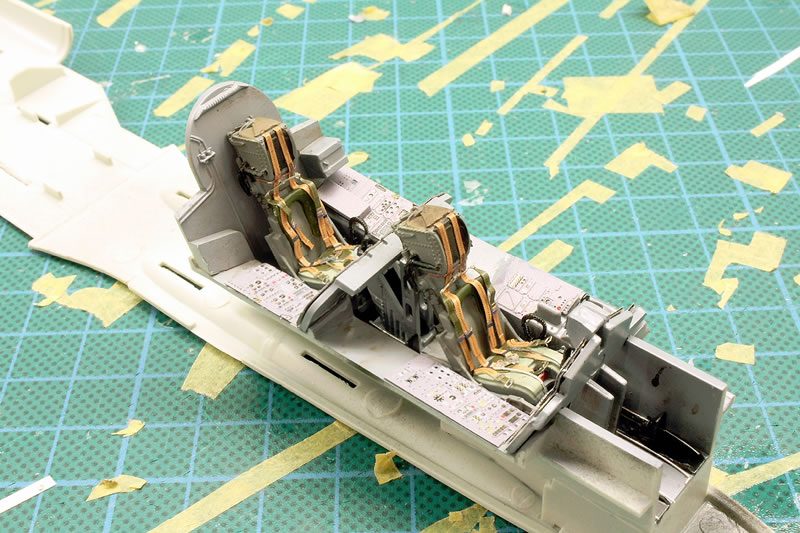
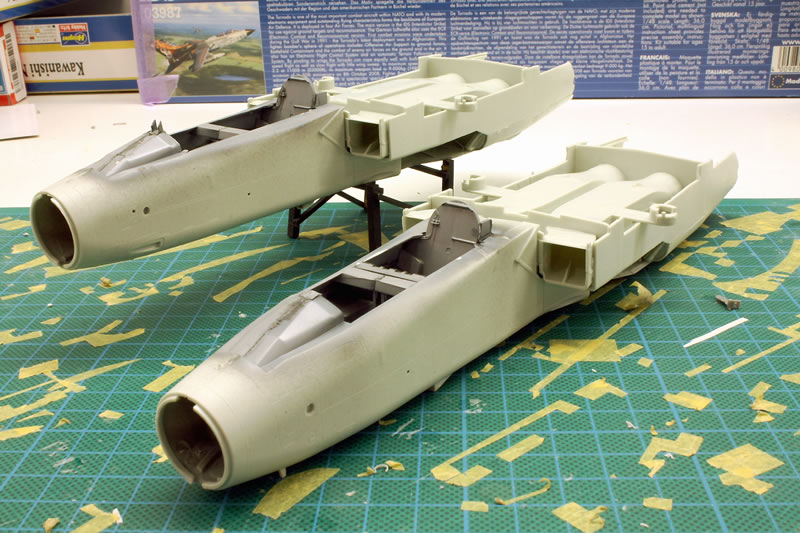

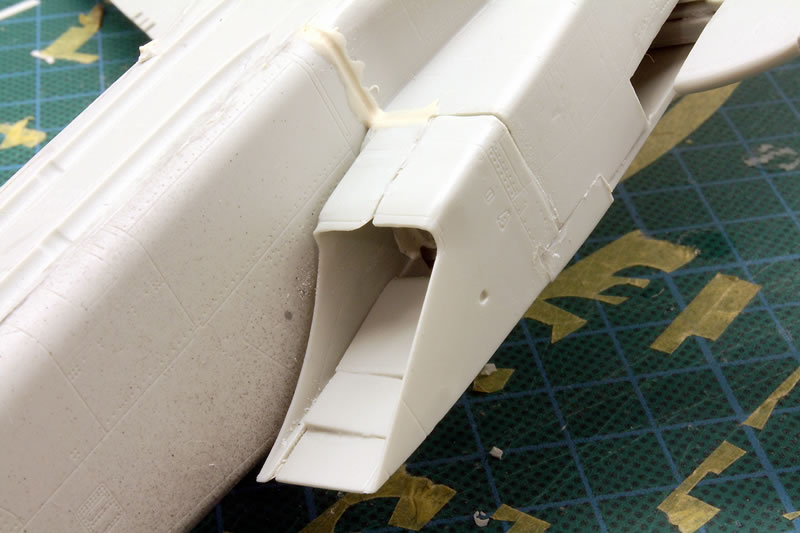

However, even resin ejector seats, etched boards for interior and exterior or a new set of tyres with correctly dimensioned resin wheels help to overlook one essential fact: the underlying kit from Revell is seriously lacking in accuracy of fit, attention to detail and quality castings!
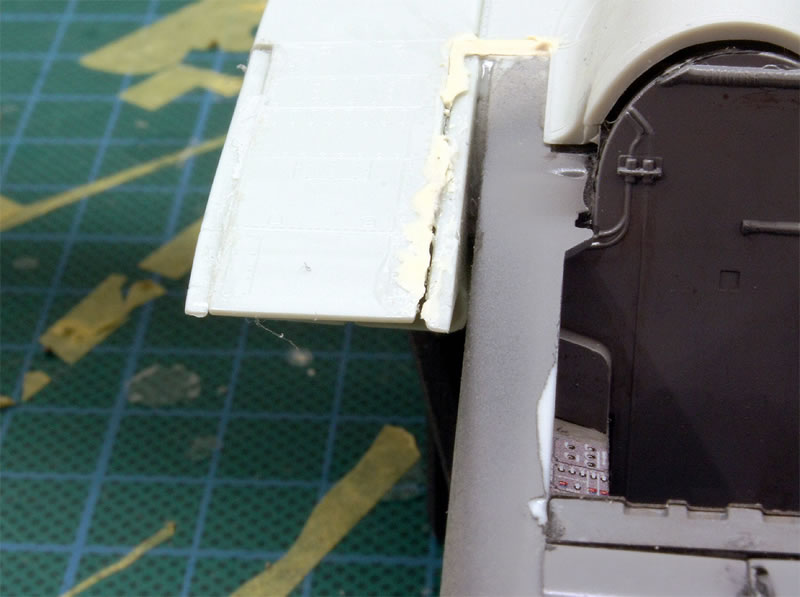
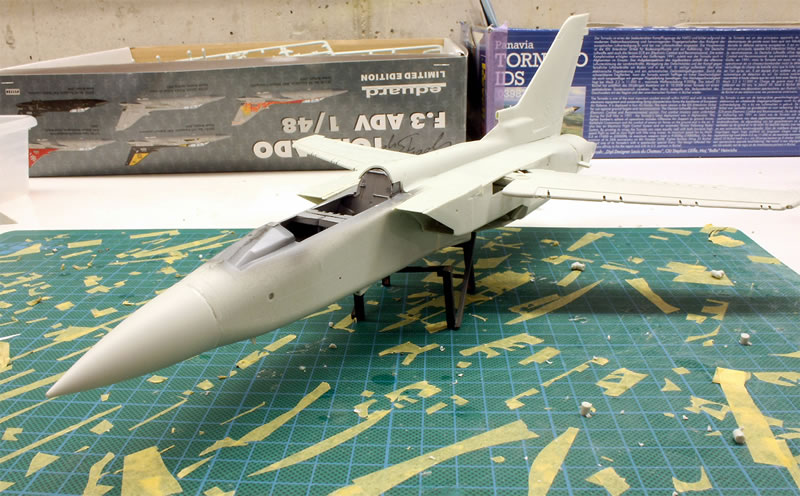

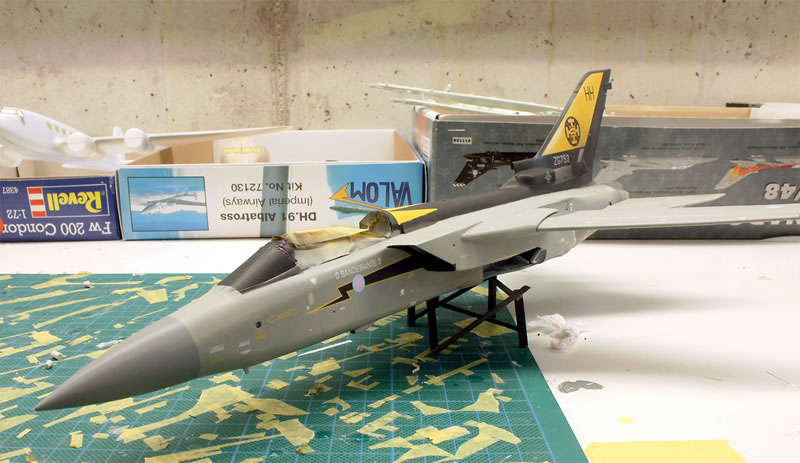
I have already reported on the shortcomings of these plastic parts in the report on the "MiG Eater" build, to which I am happy to refer so as not to repeat myself here. The enclosed pictures of the building process should, moreover, be able to illustrate what I am talking about quite well on their own.
To end with an aspect of the positive that this kit also has to offer: the detailed decal sheet, which Eduard has produced by Cartograph, really offers sufficient, excellent and thus also very comfortable to work with material. The markings offered are also so attractive that I had to take quite a while to choose before finally deciding on ZG 753 "O Bandeirante 3"!
If you are interested in the building process, please have a look here on Scalemates:
https://www.scalemates.com/profiles/mate.php?id=10148&p=albums&album=92373
remarks will be appreciated:
ro.sachsenhofer@gmx.at
Model, Images and Text Copyright ©
2023 by Roland Sachsenhofer
Page Created 8 August, 2023
Last Updated
8 August, 2023
Back to HyperScale Main Page

|
Home
| What's New | Features | Gallery | Reviews | Reference | Resource Guides | Forum |